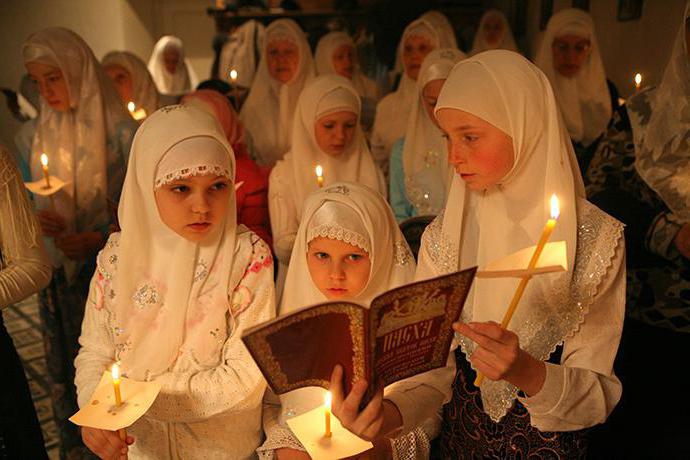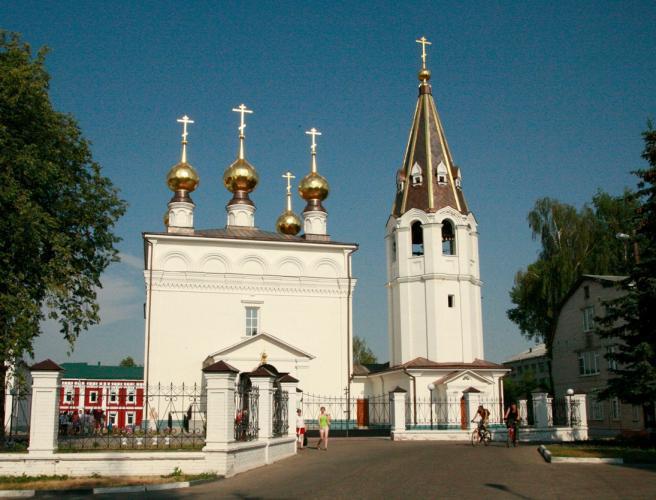The Kozelsk Diocese and the history of its creation
Kozelskaya diocese of the Russian Orthodox Church,part of the Kaluga Metropolis, was formed in accordance with the decision of the Holy Synod, adopted by him at a meeting held in early October 2013. It replaced the former Kazel Vicariate, established in 1924, but after the death of its head Bishop Mikhey (Alekseyev), which followed in 1931, for a long time remained without direct leadership.

Appointment of a new vicar
It should be explained that in the traditions of the Russian Churchunder the Vicariate it is accepted to understand part of the territory that is part of a larger administrative and ecclesiastical unit - the diocese. Its head - vicar - is a bishop who does not have the powers of the ruling bishop, but is in the jurisdiction of the diocesan lord. The leadership of the newly formed administrative-territorial unit was entrusted to Bishop Lyudinovsky Nikita (Ananyev) with the vassal authority placed on him.
Structure of the Kazel Diocese and its main temple
According to the administrative division of Kozelskaya andLyudinovskaya diocese includes seven deaneries - territorial units uniting groups of parishes located a short distance from each other and subordinate to the deaneries - the leaders appointed by the head of the diocese. Among them - Kozelskoye, Zhizdrinskoe, Sukhinichskoye, Ulyanovskoye, Duminicheskoye, Lyudinovskoe and Khvastovka deanery. At present, they unite fifty-two parishes.
The center of the new diocese was the city of Kozelsk, andthe main church is the Uspensky Cathedral, which was partially destroyed by the Communists and is currently under reconstruction. The exact date of its construction is unknown, but according to legend, this ancient shrine was erected on the spot where in 1238, during the siege of the city by the Tatars, the defenders of the fortress locked themselves in a wooden church on its territory and preferred to die in the fire, but not surrender to the enemy. Today, a stone cross, placed once on the site of the tragedy, and now adorns the entrance to the local lore museum, reminds of their exploit.

The monastery, shone by the light of the old
The Kozelsk Diocese has long been famouslocated on its territory by holy monasteries, the most famous of which is the famous Holy Monastery of the Vvedens, commonly referred to as the Optina desert. Founded six centuries ago, it became one of the most significant spiritual centers of Russia in the nineteenth and early twentieth centuries thanks to the fourteen holy elders tied up within its walls and for decades succeeding each other.
Hardly among modern-day vetschkovlennyh peopleor even those who limited themselves to only a shallow interest in religion, there is a person who is not familiar with the names of the Optina elders and who has not heard of their influence on the spiritual climate of pre-revolutionary Russia. Reverend Leo (Nagolkin), Makari (Ivanov), Moses (Putilov) and their followers became the true pillars of Russian Orthodoxy, shining with their righteousness and piety.

The monastery, which became the center of public education
Another holy abode, which is rightly proud ofKozelskaya diocese, is the Amvrosiev women's deserts, located near the village of Shamordino, Kaluga region. In the people it is often called the Shamordin monastery. The monastery was founded in 1884, and its first abbess was Sofia Mihailovna Bolotova (schema Sophia Sofia), descended from an old noble family, many times noted in the annals in connection with the most important historical events of the past centuries.
In the years preceding the October coup,The monastery became one of the main centers of public education. The works of his sisters opened a school, where children from the poorest families could not only learn to read and write, but also acquire certain skills in various crafts. As well as Optina deserts, the Kazan Amvrosievskaya monastery has the status of a stauropegic monastery, that is, subordinated directly to the patriarch and the Holy Synod, the monastery.
In addition to these two monasteries, the Kozelsk Diocesefamous and the male desert of the Savior Not Made by Hands, located in the village of Klykiv. The exact date of the foundation of the monastery is unknown, but in archival documents its first mention dates back to 1829. In the Soviet period, the monastery was closed and revived only in 2001.

The first of the newly erected temples
Among the ancient temples that are so richKozelskaya diocese, now many new, erected over the past decades, are becoming known. Their appearance was the result of the blessed changes that have occurred in the life of the Russian church due to the democratic trends of recent years.
The address of one of these newly built shrines: The Kozelsk Diocese, p. Boyanovichi, the temple of St. Nicholas the Wonderworker. It was built in 1990-1995, that is, it became one of the first to appear in the period of perestroika. After him, many other churches built on the territory of the diocese opened their doors to the parishioners.
</ p>>







